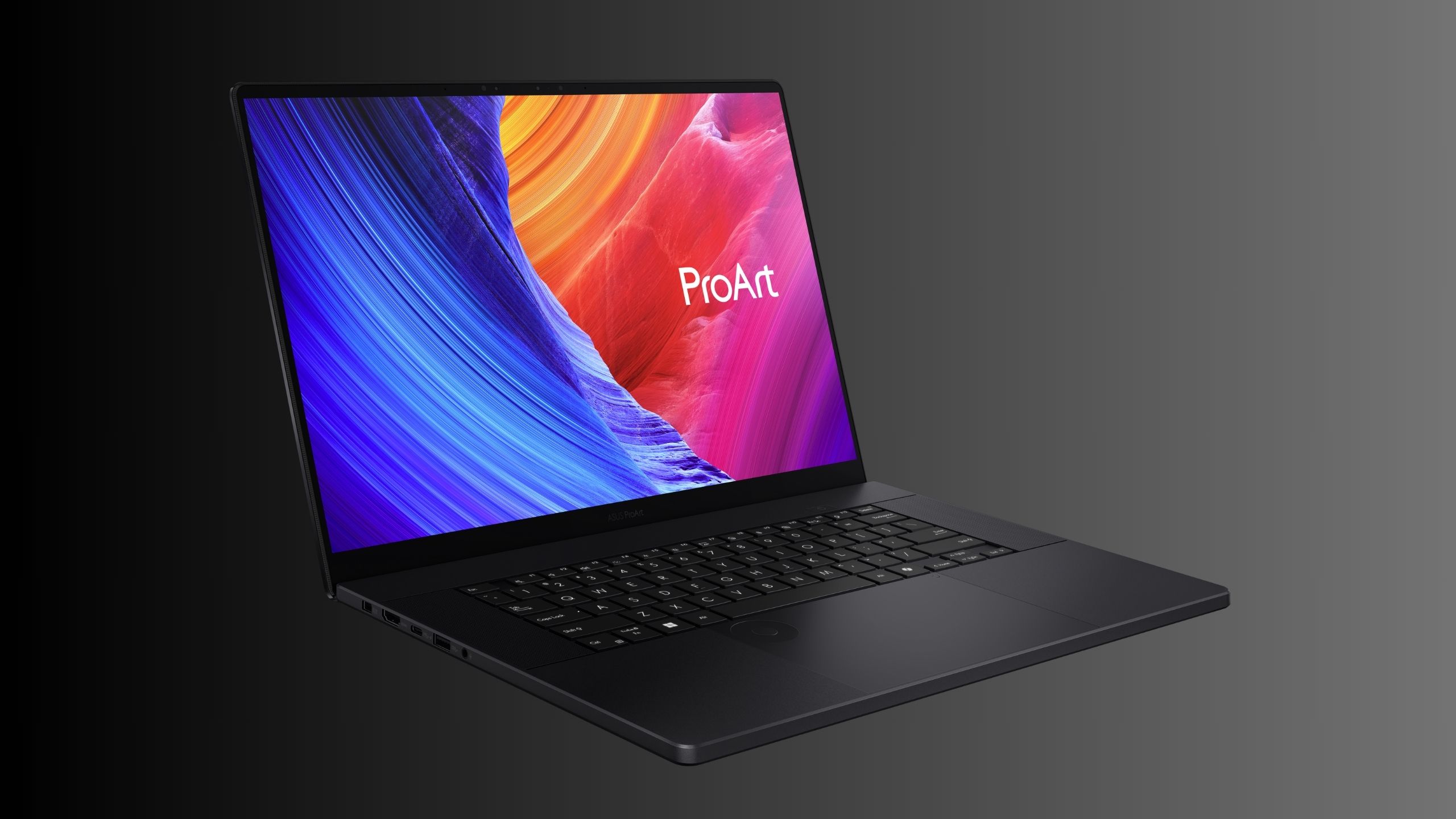The Asus ProArt P16 nails local AI and beats MacBooks — but it doesn’t come cheap
It outperforms MacBooks in more ways than one — but you’ll need to pay up for all that power.

Asus kicked off its Computex announcements on Monday with “updated solutions” for creators, students, and businesses. But one laptop stands out from the rest.
The Asus ProArt P16 (H7606), a creator-focused laptop, has features that set it apart.
Let's dive in.
The ASUS ProArt P16 (H7606) packs serious power and local AI
ASUS’s ProArt lineup focuses on blending portability and performance for creative professionals. This year’s refreshed models appear to take that commitment even further and might be the company’s best devices yet for artists, editors, designers, and photographers.
Starting with the display, the ProArt P16 maintains the same specs as its predecessor (which Laptop Mag reviewed last year), featuring a 16-inch OLED touchscreen display, a 60Hz refresh rate, and a 3,840 x 2,400 resolution.
Ultimately, this means the laptop offers impressive color accuracy and sharpness. Though competitors like the Apple MacBook Pro are also constantly praised for their excellent displays, Asus's use of an OLED panel gives it a slight edge in contrast.
It comes in a classy matte black chassis, which ASUS refers to as the “Nano Black” colorway. The ProArt P16 model is powered by the AMD Ryzen AI 9 HX 370 processor.
Sign up to receive The Snapshot, a free special dispatch from Laptop Mag, in your inbox.
Given that this laptop is aimed primarily at creatives, a powerful GPU is usually more important than a strong CPU (which definitely still matters). ASUS pairs the powerful AMD Ryzen CPU with the newer Nvidia GeForce RTX 5070 Laptop GPU for that extra rendering muscle. Now, here's where it actually gets exciting.
This time, the ProArt 16 focuses on nailing local AI, which essentially means AI running directly on your device instead of the cloud. The laptop comes with two Asus-exclusive apps, StoryCube and MuseTree. The former is Asus's AI-powered digital asset-management tool, while the latter is more of a creative idea generator that can transform “inspiration into imagery.”

This brings three key benefits: Creatives can use AI even if they’re offline and don’t have a stable internet connection, they get faster responses, and using AI is more secure and privacy-friendly.
Since everything happens on the laptop itself and stays right where you can see it (instead of the cloud), any files you upload or prompts you give the AI don’t leave your device, so you maintain complete control of your data.
The on-device AI processing truly makes the Asus ProArt P16 stand out from the competition since companies have yet to integrate such powerful local AI capabilities into laptops. Think Apple — their Macs still rely mainly on cloud-based AI rather than fully on-device processing like this.
The ProArt P16’s powerful processor boasts 50 TOPS of NPU processing power, meaning it can easily handle on-device AI workloads. It packs all of this (and more) into an incredibly portable form factor—it’s just over half an inch thin and weighs 4.08 pounds.
The ProArt P16 is also a Copilot+ PC and runs Microsoft Copilot AI on-device. Copilot+ PCs are praised for their ability to run AI tools locally using an NPU, unlocking features that rely on this hardware, like the controversial Recall feature, which made a quiet comeback recently.
All this power comes at a hefty price tag
The 2025 ProArt 16 will start at $2,499 and will be available at the Asus Store (in-store and online) and Best Buy during Q2 2025, meaning it will hit shelves in late June.
If the price tag of the ProArt 16 made you reconsider your life decisions, or if you’re simply not a creative professional and don’t need that much power, thankfully, Asus has refreshed its other PC lines, too, including the Chromebook series (CX34, CX14, CX15) and ExpertBook series (B5, B1).
More from Laptop Mag
- The Acer Swift X 14, a favorite of creators, is being refreshed for 2025
- The HP ZBook Ultra outperforms the MacBook Pro in key areas, but it comes at a price
- Unveiled at Computex, HP's new OmniBook 5 could be the next battery life champ

Mahnoor Faisal is a freelance tech journalist who began her professional writing journey in 2021. While she got her start as an iOS writer, she’s expanded her beat over the years and now focuses on both the mobile and laptop side of the tech world. Her work has appeared across outlets like MakeUseOf, XDA Developers, MUO, SlashGear, Android Police, The Mac Observer, and, of course, Laptop Mag.
Mahnoor’s an Apple enthusiast at heart but loves reporting on all things tech. When she’s not writing or cramming for another college exam, you’ll find her either mindlessly scrolling through TikTok for hours like every other Gen Z-er or hanging out with her friends.
You must confirm your public display name before commenting
Please logout and then login again, you will then be prompted to enter your display name.
